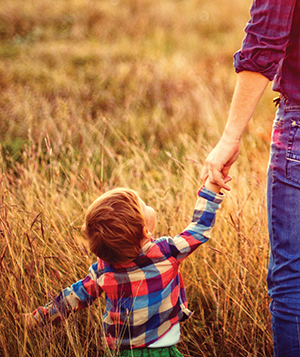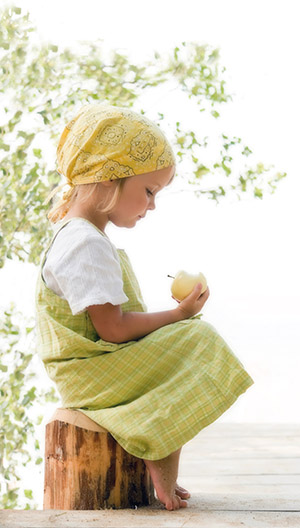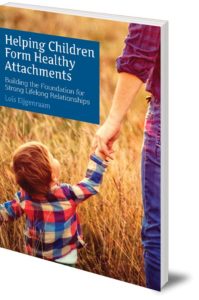Healthy Attachments for Harmonious Living
by Floris Books • 20 April 2017 • Child Health and Parenting • 0 Comments
An extract from Helping Children Form Healthy Attachments
The term ‘healthy attachment’ refers to the bonds children form within themselves and with the world around them. Being ‘healthily attached’ involves feeling safe, at ease, being able to trust others, having self-confidence and the confidence to explore. Bonding with ourselves is the foundation for building relationships with parents, carers, friends, even with plants and animals – in short, with the entire world.
 When I became a mother in 1989, I started to look into the process of bonding as part of my broader aim of learning how to live ‘in harmony’ with my children, as well as other people and the world around us. I started to make conscious choices about the furnishings in our home, about toys that the children received or didn’t receive, about nutrition and mealtimes, about how to spend free time and holidays, about children’s clothes, about illness, medications and cosmetics; it seemed that everything was intertwined.
When I became a mother in 1989, I started to look into the process of bonding as part of my broader aim of learning how to live ‘in harmony’ with my children, as well as other people and the world around us. I started to make conscious choices about the furnishings in our home, about toys that the children received or didn’t receive, about nutrition and mealtimes, about how to spend free time and holidays, about children’s clothes, about illness, medications and cosmetics; it seemed that everything was intertwined.
During my years as a kindergarten teacher in a Steiner-Waldorf school and a tutor at the Academy for Parents, I found that many parents had concerns and questions about raising their children. Feelings of guilt would often go hand in hand with parents’ high expectations or ideals. But such thoughts can be paralysing and may prevent us from finding a helpful solution to the problem. Being open and honest about such feelings within ourselves and with others can help us to explore and address such issues.
I also had the privilege to meet families whose nurturing approach to the attachment process showed a great deal of love and warmth. These parents – often a mother and father, but also single parents or same-sex parents – understood and utilised the building blocks needed to create a life-long foundation for their children.
 They were educators who took responsibility for their own biography, meaning that they were aware of patterns brought with them from their own childhood, and they were conscious that these patterns could sometimes get in the way. Struggling to find parenting answers in our own upbringings was a common theme: our lifestyle has changed so much that those examples often don’t seem relevant to today’s society.
They were educators who took responsibility for their own biography, meaning that they were aware of patterns brought with them from their own childhood, and they were conscious that these patterns could sometimes get in the way. Struggling to find parenting answers in our own upbringings was a common theme: our lifestyle has changed so much that those examples often don’t seem relevant to today’s society.
I have also met families who were affected by domestic violence, addiction, neglect, or emotional or sexual abuse. A few times children in my class were labelled COPMI (Child of Parent with a Mental Illness) by social workers. In these less stable family situations, these children appeal to their surroundings to provide the building blocks needed for attachment.
I am an advocate of education through hope, no matter how hard the circumstances are. Everyone should encounter love through one human being who continues to believe in them and in their power to fulfil their destiny in this world. This may be a neighbour, a teacher, the school janitor or someone they just happen to meet. One person can make all the difference in another person’s biography.
If you treat an individual as he is, he will remain how he is. But if you treat him as if he were what he ought to be and could be, he will become what he ought to be and could be.
Goethe
 The above extract is taken from Helping Children form Healthy Attachments by Loïs Eijgenraam
The above extract is taken from Helping Children form Healthy Attachments by Loïs Eijgenraam